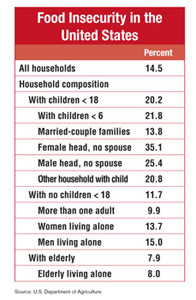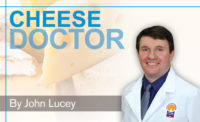
|
Consumers recognize that cultured dairy products (including yogurt, cottage cheese and fermented milk beverages) are healthy and good-for-you choices. Health professionals consider cultured dairy foods to be nutrient-dense foods, meaning they have a high nutrient-to-energy ratio.
Interest from health professionals, advice from government health agencies to increase intake of some nutrients and growing evidence that specific food components can contribute to health and wellness may spawn a new generation of nutrient-enriched, super-charged cultured dairy products.
Because cultured dairy products are consumed regularly and by specific market segments, some observers consider these dairy foods to be ideal for delivering other targeted health and wellness food components to consumers.
In poorer regions of the world, micronutrient malnutrition is associated with food shortages. Even in developed countries like the United States, there are people who suffer malnutrition associated with insufficient food intake. As shown in the chart, at some point in 2010, almost 15% of households (17.2 million Americans) were characterized as “food insecure” (defined as when all people at all times do not have access to sufficient, safe, nutritious food to maintain a healthy and active life).
Recommended nutrient needs
The 2010 Dietary Guidelines for Americans recommends focusing on “consuming nutrient-dense foods,” meaning foods that contain more calcium, dietary fiber, vitamin D and potassium. The Guidelines also recommend that Americans older than 50 should consume more foods fortified with Vitamin B12 and that women who could become pregnant should consume 400 micrograms of folic acid from fortified foods and/or supplements.
Fortification of dairy foods to promote health and wellness is not new. Dairy foods are widely consumed and their fortification with specific nutrients can significantly impact nutrient intake. The fortification of fluid milk with Vitamins A and D is just one example. In the United States, fluid milk accounts for more than two-thirds of the total Vitamin D intake in children between the ages of 2 and 18 years old and almost half of the total Vitamin D intake in adults over 19 years old.
Nonetheless, indiscriminate fortification of nutrients and other foods is not advisable. In the extreme, excess consumption of nutrients can be toxic. Fortification of fresh produce, meat, fish and poultry is not allowed in the United States. The Food and Drug Administration encouraged manufacturers to follow its Fortification Policy, which describes the conditions when nutrients may appropriately be added to a food. In the case of some nutrients, like Vitamin D, the Code of Federal Regulations specifies which foods can be fortified with Vitamin D.
Growing evidence suggests that specific food components (for example, omega-3 fatty acids, plant sterols and oligosaccharides) may promote or support overall health and wellness, including heart health, bone health, digestive health, brain function and immune function.
Some processors have introduced cultured dairy products with additional nutrients. Fiber One Cottage Cheese contains 20% of the Daily Value for fiber. Stonyfield markets yogurts containing docosahexanoic acid (DHA) for brain health.
As consumers continue to seek foods that deliver more than basic nutrition, are more nutrient-dense and provide specific health benefits, will the cultured dairy products industry respond with innovative new products with new, easily understood health and wellness messages?
No food can or should try to be a panacea for health and wellness. But helping consumers achieve greater health and wellness benefits through judicious fortification of cultured dairy foods, consistent with established nutrition guidance, is a noble goal that may also make business sense.







